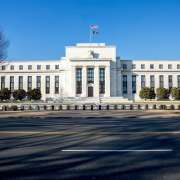
Asia Recovery Interrupted As Recessions Loom In Europe, US
Asia’s growth cycle is nearing an inflection point. It’s a tale of an interrupted recovery in the region, even as we expect the US and Europe to slip into mild recessions soon.
- Growth outlooks are heterogeneous across Asian economies
- We expect the US and Europe to slip into mild but long recessions
- Japan is unique, and we see a decent economic recovery path
Asia’s growth cycle is nearing an inflection point. It’s a tale of an interrupted recovery in the region, even as we expect the US and Europe to slip into mild recessions soon.
A synchronized global growth slowdown and a semiconductor downcycle will likely push Asia’s export growth into negative territory by year-end. The export cycle is likely to bottom only in the second quarter of 2023. An unintended inventory buildup in the region also means inventory destocking and industrial production cuts ahead.
The reopening-driven tailwinds, which are still boosting consumption and helping the laggard services sectors to catch up, are not expected to sustain beyond this year. Lower household savings buffers and a rising cost of living are likely to weigh on private consumption demand next year. Asia also remains vulnerable to food and energy price shocks.
Overall, we expect real GDP growth in Asia (ex-Japan, China) to moderate from 6.2 percent y-o-y in 2021 to 5.5 percent in 2022 and 3.5 percent in 2023.
The growth outlooks are heterogeneous across economies and differ depending on where each economy currently is and how much response room they have. We do expect growth disappointments across countries, with the open economies suffering more and those reliant on domestic demand offering a relative buffer.
South Korea will likely enter a recession starting Q3 2022 on an export downturn and the domestic housing downcycle. Singapore is expected to have higher-for-longer inflation and a close brush with recession. Thailand should benefit from the recovery in tourism.
India and Indonesia should fare better on growth next year.
India’s forex reserves buffer is strong and corporate balance sheets have been robust. Foreign companies’ shift to a China + 1 manufacturing strategy has also resulted in multiple announcements for new manufacturing facilities in India.
Indonesia has a near-term inflation problem and will likely hike policy rates by a cumulative 125bp, but the fiscal side is relatively strong and it is benefiting from increased prices for the commodities it exports.
Meanwhile, China’s growth recovery will likely be sluggish and below consensus forecasts, as the economy faces a double whammy from a potential downswing of the Covid business cycle and a deteriorating property sector.
In most countries in Asia, inflation has not yet peaked and could do so in the third or fourth quarter of this year, as the pass-through effects from global food prices occurs with a lag, subsidized fuel and utility prices are still being revised, and due to reopening-driven services inflation. Inflation expectations have drifted higher but, unlike in the US, there is limited evidence of a wage-price spiral. The expected growth slowdown will also likely push inflation to back within central bank targets by mid-2023.
On monetary policy, with inflation above target and policy rates still below neutral, we expect more rate hikes from Asian central banks, but weaker growth should mean that the rate hiking cycle will likely end before Q1 2023.
The global economic outlook is challenging, and we expect the US and Europe to soon slip into mild but long recessions.
US inflation has become moderately entrenched, with rapidly rising prices across a wide range of items. Aggressive Federal Reserve policy and a recession will be needed to bring inflation back down to 2% in 2023. Strong consumer fundamentals should limit the speed at which the economy contracts, but a lack of policy support will likely prolong the downturn.
In Europe, a combination of surging gas, electricity and food prices, amid serious concerns about energy security, means that a recession looks inevitable. Different approaches to supporting households through the energy crisis will lead to different inflation responses across countries.
Japan is unique, in that the central bank is still committed to keeping monetary policy easy despite some signs of inflation. The government is also expected to introduce fiscal measures to counter food and energy inflation. Therefore, we see a decent economic recovery path for Japan, though that does not suggest it can be structurally decoupled from other economies.
The world’s leading central banks know that their credibility is at stake and that they must avoid a 1970s-style outcome in which out-of-control inflation leads to a wage-price spiral. That means they are willing to sacrifice growth to bring inflation to within their comfort levels.
Emerging market economies, meanwhile, face a challenging environment of rising US rates, a strong US dollar, high food prices and cooling foreign demand. While emerging market central banks may have become more independent from their governments, they are still dependent on the Fed. Risks relating to them overtightening to prevent capital outflows and currency depreciation in response to the Fed raising rates need to be watched closely.
With contributions from Robert Dent, Senior US Economist; George Buckley, Chief European Economist; and Kyohei Morita, Chief Japan Economist
Contributor

Rob Subbaraman
Head of Global Macro Research

Sonal Varma
Chief Economist, India and Asia ex-Japan
Disclaimer
This content has been prepared by Nomura solely for information purposes, and is not an offer to buy or sell or provide (as the case may be) or a solicitation of an offer to buy or sell or enter into any agreement with respect to any security, product, service (including but not limited to investment advisory services) or investment. The opinions expressed in the content do not constitute investment advice and independent advice should be sought where appropriate.The content contains general information only and does not take into account the individual objectives, financial situation or needs of a person. All information, opinions and estimates expressed in the content are current as of the date of publication, are subject to change without notice, and may become outdated over time. To the extent that any materials or investment services on or referred to in the content are construed to be regulated activities under the local laws of any jurisdiction and are made available to persons resident in such jurisdiction, they shall only be made available through appropriately licenced Nomura entities in that jurisdiction or otherwise through Nomura entities that are exempt from applicable licensing and regulatory requirements in that jurisdiction. For more information please go to https://www.nomuraholdings.com/policy/terms.html.



